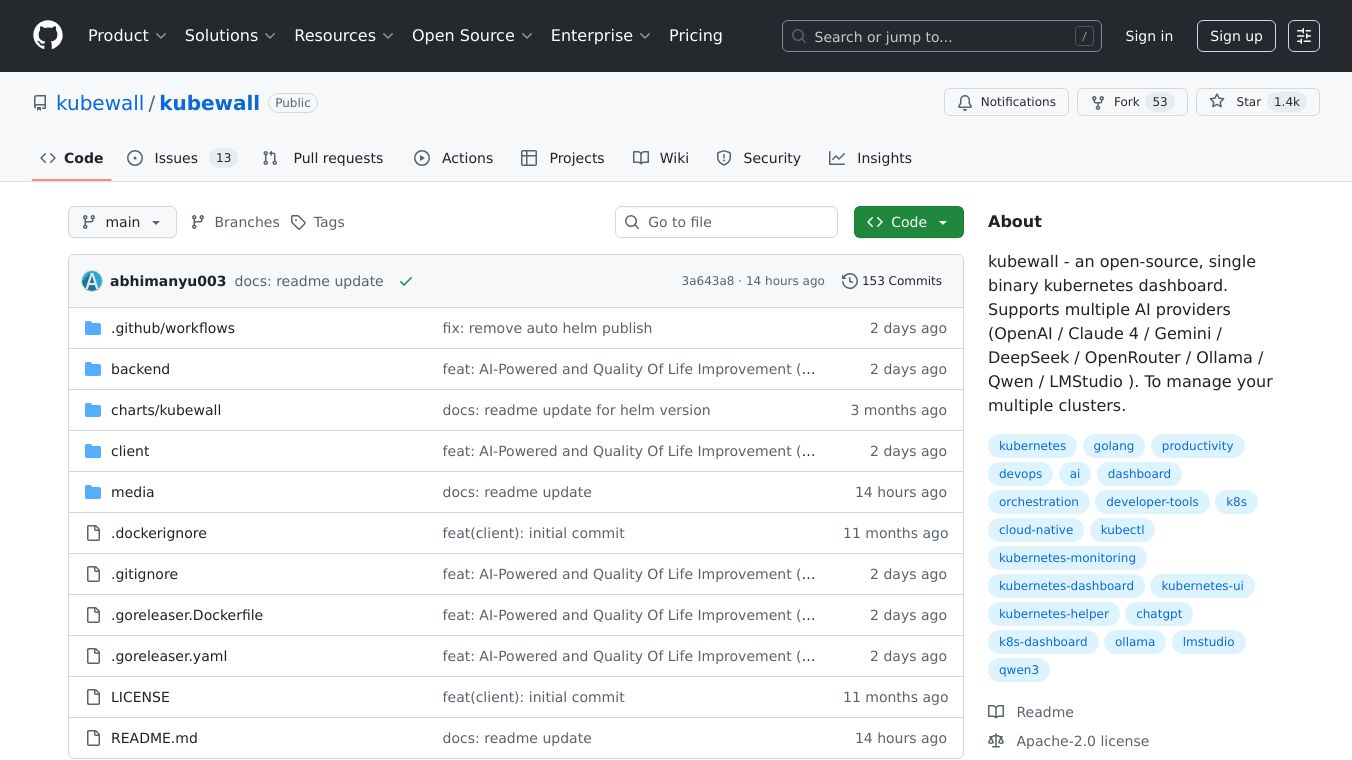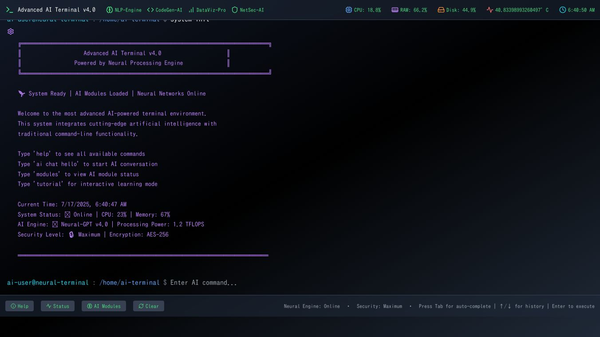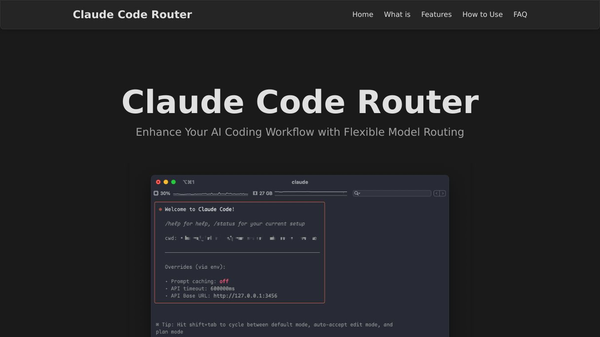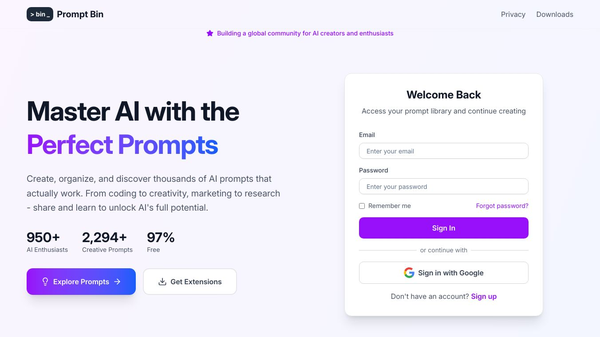kubewall AI-Powered Kubernetes Dashboard

kubewall is an open-source, single binary Kubernetes dashboard designed to manage multiple Kubernetes clusters. It supports various AI providers, including OpenAI, Claude 4, Gemini, DeepSeek, OpenRouter, Ollama, Qwen, and LMStudio. This tool offers a simple and rich real-time interface for managing and investigating clusters, providing comprehensive insights into cluster states, manifest information of pods, services, configs, and more. Kubewall is currently under active development.
Benefits
kubewall simplifies Kubernetes management with its easy-to-use interface and powerful features. It provides real-time monitoring and detailed insights into cluster states, making it easier to manage and troubleshoot issues. The support for multiple AI providers allows users to leverage AI for optimizing configurations and troubleshooting. With its single binary deployment, kubewall is easy to install and use, making it accessible for both technical and non-technical users.
Use Cases
kubewall is ideal for DevOps teams, system administrators, and developers who need to manage multiple Kubernetes clusters efficiently. It can be used in various environments, including cloud-based and on-premises setups. The tool is particularly useful for monitoring cluster performance, managing resources, and troubleshooting issues in real-time. Its AI-powered features can help optimize configurations and improve overall cluster performance.
Installation
kubewall can be installed using various methods, including Docker, Helm, Homebrew, Snap, Arch Linux, Winget, Scoop, and pre-compiled binaries for MacOS, Linux, Windows, and FreeBSD. The installation process is straightforward and does not require complex configurations.
Accessing Kubewall
After installation, you can access kubewall athttp://localhost:7080. For Kubernetes clusters or on-premises servers, it is recommended to use HTTPS. To start kubewall with HTTPS, use the following command:
$ kubewall --certFile=/path/to/cert.pem --keyFile=/path/to/key.pemSetting Up HTTPS Locally
You can use your own certificates or create new local trusted certificates using mkcert. Follow these steps:1. Install mkcert on your computer.2. Run the following command in your terminal or command prompt:
mkcert kubewall.test localhost 127.0.0.1 ::1- This command will generate a certificate file and a key file.
- Use these files with kubewall using the
--certFile=and--keyFile=flags.
kubewall --certFile=kubewall.test+3.pem --keyFile=kubewall.test+3-key.pemCustom Address/Port Configuration
You can run kubewall on any IP and port combination using the--listenflag. Examples include:- Bind to all interfaces:
kubewall --listen :7080- Bind to a specific network interface:
kubewall --listen 192.168.1.10:8080Contribution
The kubewall project welcomes contributions via pull requests and issues. This includes refactoring, adding features, correcting English, and more. For assistance, you can contact the developers through the provided channels. Thanks to all contributors and users of the project.
License
Kubewall is licensed under the specified license terms.
This content is either user submitted or generated using AI technology (including, but not limited to, Google Gemini API, Llama, Grok, and Mistral), based on automated research and analysis of public data sources from search engines like DuckDuckGo, Google Search, and SearXNG, and directly from the tool's own website and with minimal to no human editing/review. THEJO AI is not affiliated with or endorsed by the AI tools or services mentioned. This is provided for informational and reference purposes only, is not an endorsement or official advice, and may contain inaccuracies or biases. Please verify details with original sources.






Comments
Please log in to post a comment.